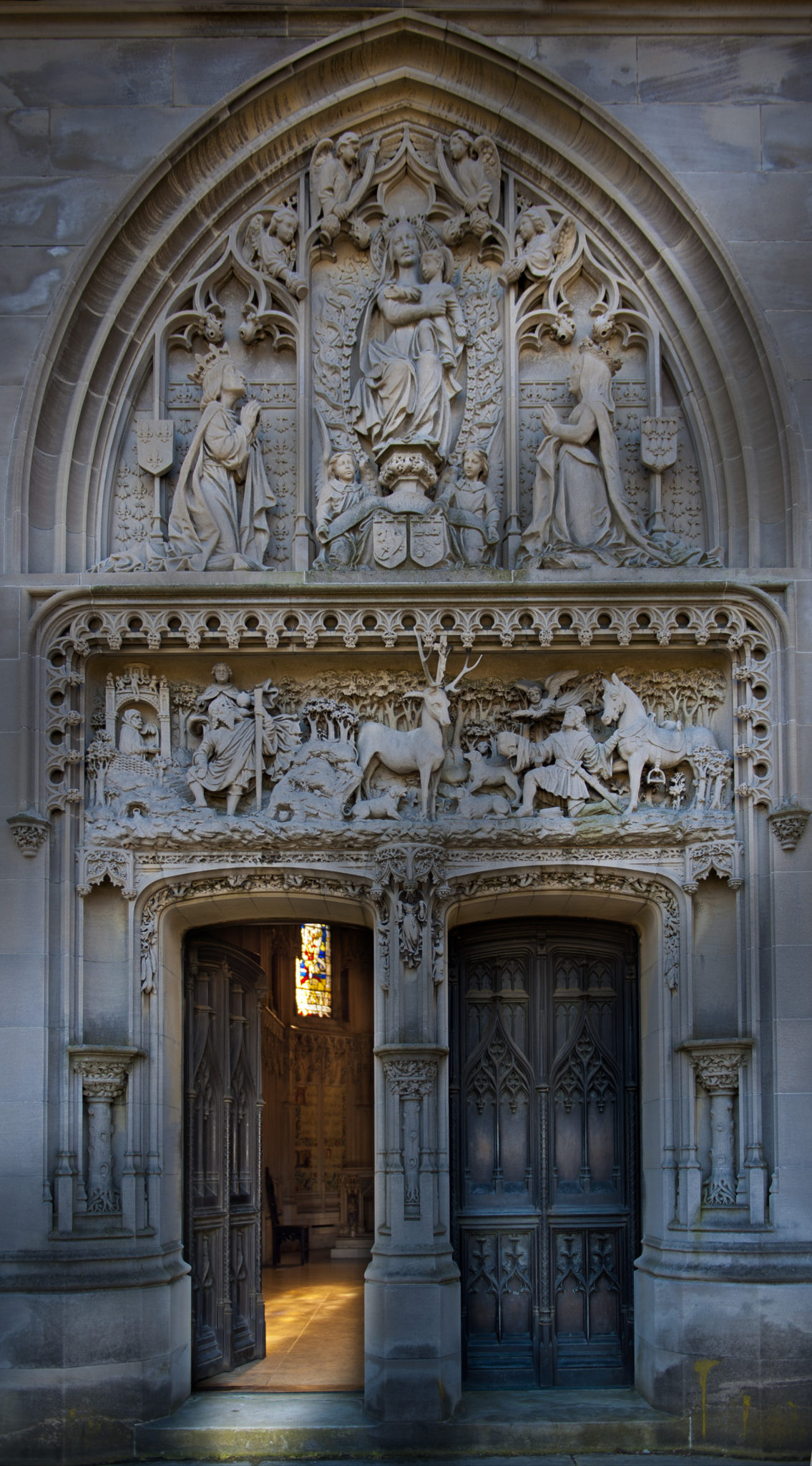
As fans of the television production “Gilded Age” await the launch of Season 2, Woodlawn prepares for zealous visitors on the search for sites associated with the show. The first season focused on Bertha Russell who was modeled after Alva Belmont when she was married to William Kissam Vanderbilt. Other Woodlawn notables featured in the show were: Jay Gould (George Russell), Caroline Astor (Mrs. Orme Wilson), and Mrs. Chamberlin. Woodlawn families mentioned include the Goelets, Schermerhorns, Jones, and Stevens.
With all the renewed interest in the Gilded Age, it was time to investigate Woodlawn’s relationship to the Vanderbilt Family. Cornelius Vanderbilt (1794-1877) had 13 children—nine daughters and four sons. When Cornelius Vanderbilt died, his remains were entombed in a mausoleum at the Moravian Cemetery on Staten Island where his parents were memorialized. Vanderbilt’s son, William Henry Vanderbilt (1821-1885), inherited the majority of the enormous fortune; he commissioned architect Richard Morris Hunt to design a new family mausoleum, which was completed in 1886 under the supervision of his son, George Washington Vanderbilt II, the builder of the iconic Biltmore Estate in Ashville, North Carolina.
Apparently, not all family members were welcome in the new mausoleum. In 1886, Cornelius Vanderbilt’s daughters Sophia, Mary, and Ethelinda moved their families from the Staten Island burial ground to Woodlawn. Their sisters, Phebe Cross and Elizabeth Osgood purchased their Woodlawn lots shortly after their father’s death in 1878 and 1879, respectively. When you enter Woodlawn, the red granite tomb of Frances Vanderbilt’s husband, Horace F. Clark (1815-1873), a member of Woodlawn’s Board of Trustees, sits on the rise.
The Vanderbilts were known as builders, and Cornelius’s granddaughters, great granddaughters and daughters in law made it into “Mrs. Astor’s 400” and were connected with some of America’s most spectacular structures. Eliza Vanderbilt Webb, the daughter of William H. Vanderbilt, married William Seward Webb and they built Shelburne Farms on the outskirts of Burlington, Vermont. The Webb family is buried in the Oak Hill Plot around a towering obelisk. Eliza’s sister Florence Vanderbilt Twombly along with her husband Hamilton built “Florham,” which is now the centerpiece of Farleigh Dickinson University in Morris, New Jersey. The Twombly monument was designed by architect Stanford White (also featured in Season 1) and crafted by Tiffany Studios Ecclesiastical and Memorial Department in 1896.
Not far from the Twombly and Webb monuments is the final resting place of Gertrude Vanderbilt Whitney (1875-1942), great granddaughter of the Commodore. She was interred in the lot of her husband’s father, William Collins Whitney. The dark Quincy Granite monument was also designed by Stanford White. On Central Avenue, near the Evergreen Plot, there is a circle with no monuments—just cornerstones bearing the initials “CV.” This space was purchased by Cornelius Vanderbilt II, Gertrude’s father and owner of the Breakers, the magnificent “cottage” in Newport, Rhode Island. Vanderbilt never used the lot and transferred it back to the cemetery in 1893 under the condition it would never be sold and could only be used as a garden.
Alva Erskine Vanderbilt, the wife of William Kissam Vanderbilt was the most famous of the builders. She worked with Richard Morris Hunt to build a substantial mansion in Manhattan, Idle Hour on Long Island, and the Marble House in Newport. She hired Hunt’s sons to design the Woodlawn mausoleum she constructed for her second husband, Oliver Hazard Perry Belmont. Completed in 1910, the tomb is a replica of the Chapel of St. Hubert in Amboise, France. When she became active in the women’s suffrage movement, Alva became a public figure and opened her mausoleum on weekends. Although Woodlawn keeps the mausoleum locked, you can view it on one of the special tours given by the Woodlawn Conservancy. Check the Conservancy’s schedule for upcoming Trolley Tours, self-guided maps, and winter book talks to learn more about Woodlawn and America’s Gilded Age.
